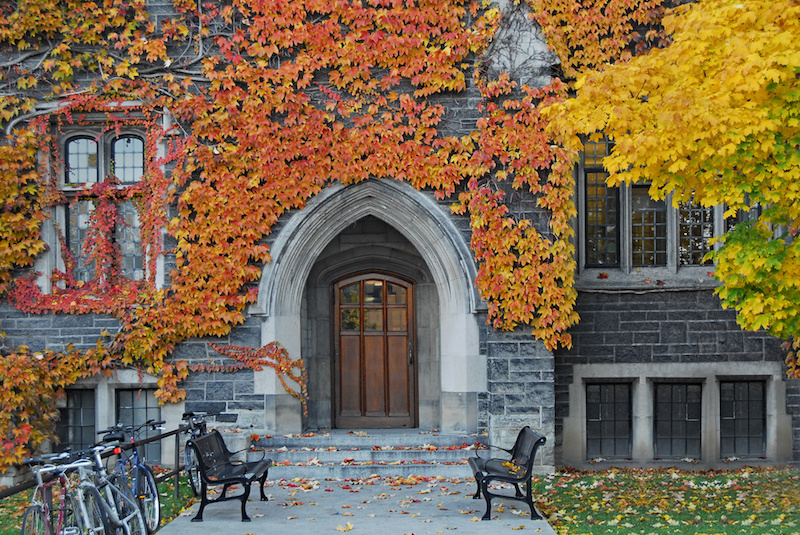With cases of the coronavirus on the rise around the U.S., colleges leaders that made the early call to go online for the fall appear more prescient every day as we get closer to the anticipated start date. While the safety of students, faculty, and staff has to be at the forefront of any decision to return to campus, there are some who have asked if the decision to return has been driven primarily by financial considerations.
The recent publication of a College Pulse/Charles Koch Foundation survey of 5,000 college students entitled COVID-19 On Campus: The Future of Learning indicates that many students and their families believe that an online experience should not cost the same as a face-to-face classroom and campus experience.
More than 6 in 10 (63% actual) students responded that students should pay “much less” tuition if only online learning options are available, and 3 in 10 (30% actual) believe that they should pay a “little less” if only online learning options are available. More than half (54%) of students believe that faculty at their school did not handle the transition well. Only 21% of students say that incorporating more online learning tools and courses should be one of the highest priorities for their school.
Despite the fact that many college presidents have stated classes will resume on campus this fall, the students may be more realistic. Over 70% of the students believe that classes will be primarily online this fall, with 18% selecting “very likely” and 53% selecting “somewhat likely.”
Author and former Chronicle of Higher Education Editor in Chief Jeff Selingo asked in an unscientific poll conducted recently among his LinkedIn followers, “Should colleges focus this summer on getting students back on campus for the fall or on improving online learning for the fall?”
He writes in his blog that only 14% of the 996 respondents voted to focus on returning students to campus. The remaining respondents were fairly evenly split between “improving online learning” (40%) and “hybrid approach” (45%). Mr. Selingo further clarified that hybrid to most colleges and universities means folding online classes on top of the campus experience.
Williams College, the wealthiest liberal arts college in the U.S. with a nearly $3.0 billion endowment, announced yesterday that it was cutting its tuition this fall by 15% due to the reduced student experience. Williams has also cancelled all sports scheduled for the fall, and students have the option of returning to campus for classes or taking classes online from home this fall. Covering the Williams College announcement in Inside Higher Education, economist Dr. Lucie Lapovsky stated that “students at other schools can use this as a pressure point to say we should reduce what we’re paying because we’re not getting the same experience.”
Robert Kelchen, an associate professor of higher education at Seton Hall University, posted an informative article about auxiliary revenue source dependency at private colleges on his blog in June. He downloaded data from the Integrated Postsecondary Education Data System (IPEDS) to calculate the distribution of revenue at colleges that reported auxiliary revenue in FY18.
According to his analysis, most colleges with on-campus housing received between 10-25% of their revenue from auxiliary sources. Combine a loss of auxiliary revenue with a demand from students to cut tuition because of the lack of a campus experience, and the small private colleges that are dependent on tuition revenues are in trouble financially.
On his July 1 Twitter feed, Dr. Kelchen tweeted that higher ed made it through June with only two college closures announced, but that July will not be so fortunate if small, residential non-wealthy private colleges can’t bring students to campus in August.
I think we made it through June with just two college closures announced: branch campuses of Johnson & Wales. https://t.co/T86cBGu5WJ July won't be so fortunate. (17/)
— Robert Kelchen (@rkelchen) July 1, 2020
Regardless of the number of active COVID-19 cases in August, there will be more campuses that announce a return to online education for the fall, because they believe they will be unable to curb the spread if traditional classrooms are used. Additionally, there will be campuses that move to online if their students return and the number of students, faculty, and staff infected with the coronavirus increase.
I’m aligned with those who believe more classes in the fall will be online. The bigger question will be how many campuses will remain open even if classes are online? Will that trigger a reluctance for students to return to campus, increased requests for tuition refunds, or both?
Time will tell but the signs are obvious – this fall will be the most financially stressing year for higher education in a long while.











